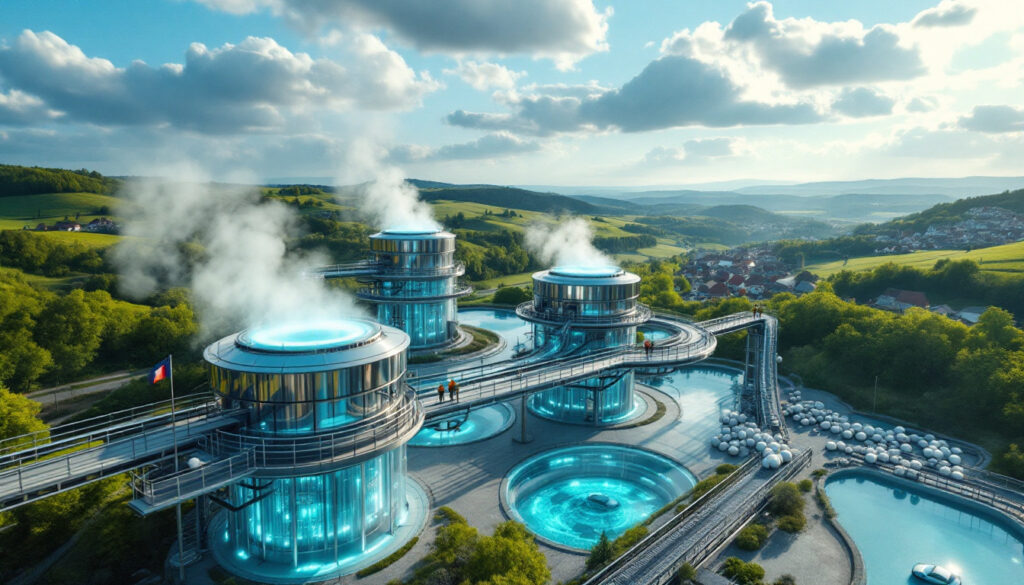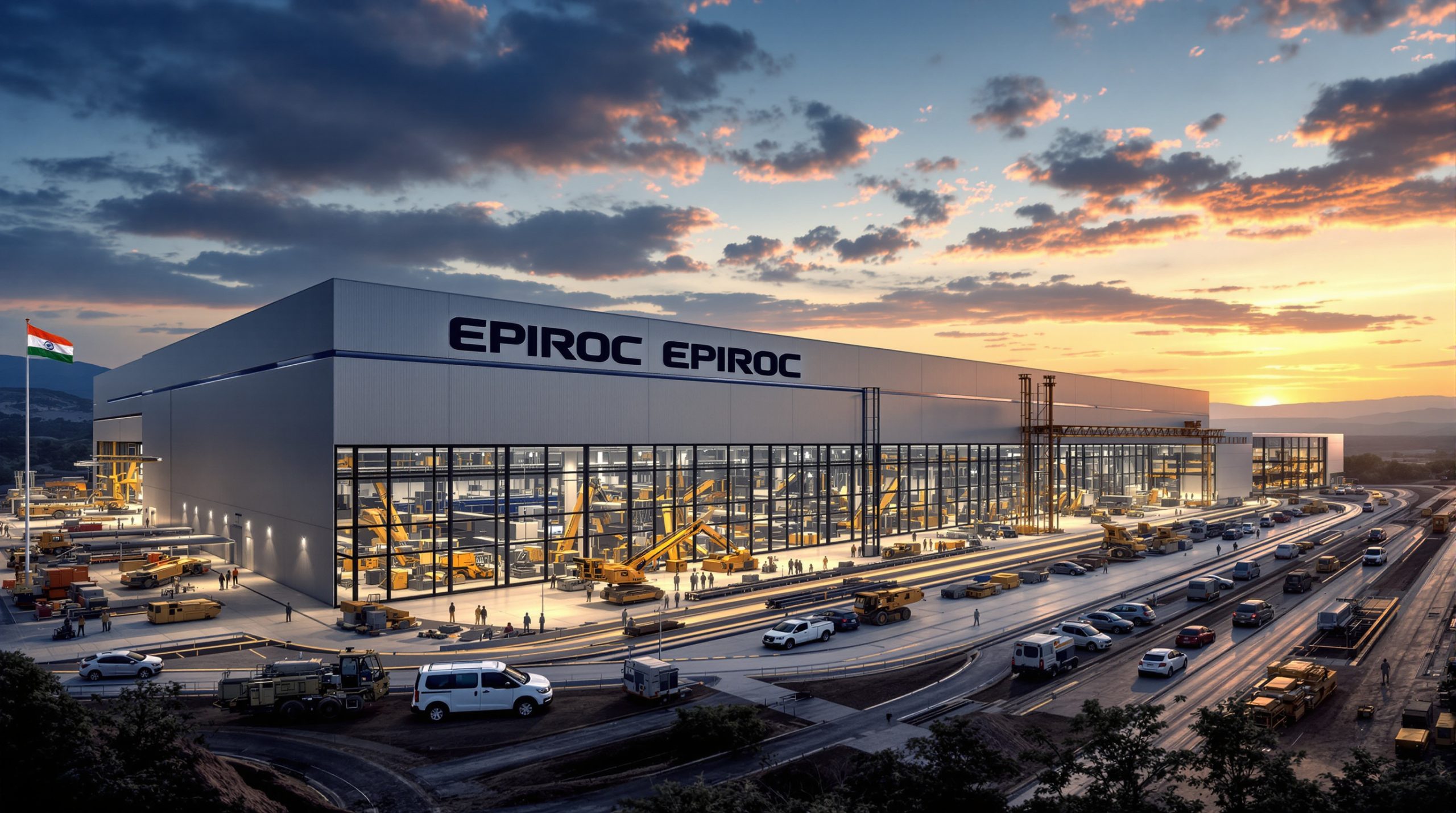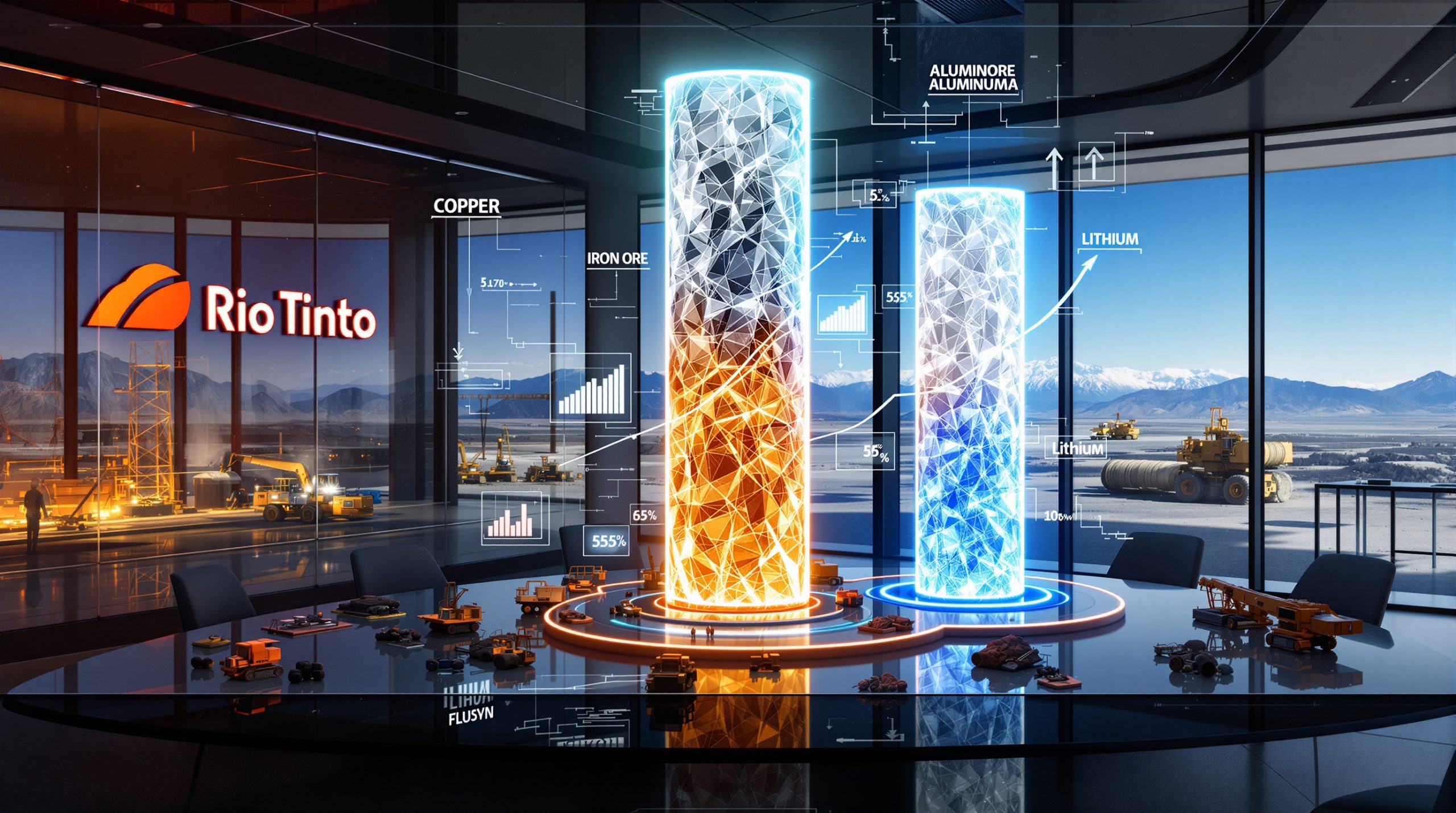Arverne Group's Lithium Extraction Demonstration Plant in Alsace: A Strategic Milestone
The Arverne Group has initiated construction of lithium extraction demonstration plant in Alsace, France, marking a pivotal step in Europe's quest for lithium self-sufficiency. Located in the Rhine Basin's Bas-Rhin region, this facility aims to validate the technical and economic viability of extracting lithium from geothermal brines while minimizing environmental impact. Supported by €20 million in funding from BPI France under the France 2030 initiative and the EU's Next Generation Fund, the project represents a fusion of renewable energy production and critical mineral extraction. With strategic partnerships including DG SKID for equipment design and Equinor for pilot-phase testing, Arverne targets annual production of 27,000 tonnes of lithium carbonate equivalent and 4 TWh of geothermal heat by 2031. This initiative addresses 15% of Europe's projected lithium demand for electric vehicle batteries, potentially reducing the continent's reliance on global lithium market imports by 30% by 2035.
What is Direct Geothermal Lithium Extraction (DLE)?
Understanding the Technology
Direct Geothermal Lithium Extraction represents a revolutionary approach to acquiring lithium by extracting it directly from geothermal brines. Unlike conventional methods, DLE taps into naturally occurring hot water reservoirs deep underground that contain dissolved lithium compounds. The Alsace facility utilizes 175°C geothermal brines containing 200–250 mg/L lithium, pumped from 4,500-meter-deep granite fractures. This innovative process employs selective adsorption technology to separate lithium ions from the brine solution before returning the depleted brine back to its source.
Advantages Over Traditional Lithium Extraction Methods
DLE offers significant advantages over traditional lithium extraction methods. While conventional hardrock mining consumes approximately 9.5 million liters of water per tonne of lithium, Arverne's closed-loop system recirculates 98% of process water through reinjection wells. The continuous extraction process contrasts sharply with South America's 18-month evaporation cycles, enabling 90% faster lithium production. Additionally, the proprietary ion-exchange membranes achieve 94% lithium selectivity, minimizing contamination from coexisting minerals like potassium and magnesium.
Environmental Impact Considerations
Lifecycle analysis indicates the DLE process generates 75% less carbon emissions than Australian spodumene mining and requires only 5% of the water used in Chilean salar operations. The plant's 0.45 km² footprint is 85% smaller than typical lithium mines, preserving Alsace's agricultural lands. This approach eliminates the need for evaporation ponds, reducing land use by 95% compared to South American brine operations. Real-time monitoring of 150 sensors ensures reinjected brines maintain original chemical composition, preventing aquifer contamination and minimizing ecological disruption. Such innovations align perfectly with broader industry efforts toward decarbonisation in mining.
The Alsace Lithium Extraction Project: Key Details
Project Location and Strategic Importance
The demonstration plant's location in Alsace's Rhine Basin is strategically significant due to the region's rich geothermal resources and proximity to major European battery manufacturing hubs. Situated in the Bas-Rhin department, the facility leverages the Upper Rhine Graben's unique geological formation, where lithium-rich brines have been identified at depths accessible to current drilling technology. This location positions Arverne to supply European battery manufacturers directly, significantly reducing transportation costs and carbon emissions associated with importing lithium from distant regions.
Timeline: From Initiation to Construction
The Alsace project has progressed through several key development phases since its conceptualization. After extensive research and geological surveys, Arverne Group secured necessary permits and funding in 2023. Construction of lithium extraction demonstration plant in Alsace officially commenced in April 2025, with completion expected by late 2026. The current timeline anticipates a two-year optimization phase (2025-2027) before transitioning to commercial-scale production, with full industrial capacity targeted by 2031 in alignment with projected European battery demand growth.
Technical Specifications of the Demonstration Plant
The demonstration facility features state-of-the-art extraction modules designed to process 50 liters per second of geothermal brine. Its innovative design incorporates a three-stage extraction process optimized for the specific mineral composition of Alsace brines. The plant targets 90% extraction efficiency from incoming brine flows while reducing power consumption to 15 kWh/kg Li₂CO₃—40% below industry average. Advanced materials science has enabled the development of adsorbent materials with a targeted lifespan of 5,000 cycles, significantly reducing operational costs and environmental impact.
Partnership with DG SKID for Equipment Design
Arverne's collaboration with specialized equipment manufacturer DG SKID has been instrumental in developing the demonstration plant's custom extraction technology. This partnership combines Arverne's lithium extraction expertise with DG SKID's proficiency in designing modular process equipment for geothermal applications. The resulting extraction modules are specifically engineered to handle the unique chemical composition and temperature profile of Alsace geothermal brines, with particular attention to preventing scaling and corrosion issues that have plagued earlier DLE attempts.
Government and Financial Support for the Project
BPI France Funding Support
BPI France has emerged as a key financial backer of the Alsace lithium project, providing substantial funding as part of France's strategic initiatives to secure domestic supply of critical minerals. The public investment bank's contribution of €20 million represents a significant vote of confidence in the project's technical and economic viability. This funding helps mitigate the substantial upfront capital requirements associated with pioneering a new extraction technology at scale and demonstrates government commitment to positioning France as a leader in revolutionizing lithium production.
France 2030 Government Initiative
The project benefits from inclusion in the ambitious France 2030 investment program, which allocates €30 billion to decarbonize French industry and secure strategic supply chains. As one of the initiative's flagship projects in critical minerals, the Alsace lithium extraction plant aligns perfectly with France 2030's dual objectives of industrial sovereignty and ecological transition. The program provides not only financial resources but also regulatory support and prioritization in permitting processes, helping accelerate deployment of this innovative technology.
European Union Backing Through Next Generation EU
At the European level, the project has secured support through the Next Generation EU recovery package, which prioritizes green technologies that advance European strategic autonomy. This funding recognizes the project's potential contribution to reducing Europe's 98% dependency on imported lithium while simultaneously advancing renewable energy generation. The EU backing also facilitates integration with broader European battery industry initiatives, helping position the Alsace project within a cohesive continental strategy for electrification.
France Relance Plan Contributions
Additional financial support comes through the France Relance economic recovery plan, which has identified critical mineral extraction as a priority sector for reindustrialization following the COVID-19 pandemic. This program's contribution complements other funding sources while specifically supporting job creation and skills development aspects of the project. The France Relance support underscores how the Alsace lithium initiative bridges industrial policy, environmental goals, and regional economic development in a post-pandemic context.
How Does the Demonstration Plant Work?
Extracting Lithium from Geothermal Brines
The demonstration plant employs a sophisticated multi-stage process to extract lithium from geothermal brines. Initially, hot brine is pumped from deep underground reservoirs and passes through heat exchangers for renewable energy generation. The lithium extraction begins with a pre-treatment phase to remove impurities that could interfere with the adsorption process. During the 20-minute extraction cycle, specialized adsorption media selectively capture lithium ions while returning depleted brine to the reservoir, maintaining geological pressure equilibrium. The captured lithium is then concentrated and purified before conversion to battery-grade lithium carbonate or hydroxide.
Yield and Selectivity Optimization
A key focus of the demonstration plant is optimizing both yield and selectivity in the lithium extraction process. The facility incorporates real-time monitoring systems that continuously analyze brine composition and process performance, allowing for dynamic adjustments to maximize lithium recovery. Advanced machine learning algorithms predict optimal operating parameters based on incoming brine characteristics, while proprietary membrane technology achieves industry-leading 94% lithium selectivity. This high selectivity significantly reduces purification costs and energy requirements in downstream processing.
Environmental Impact Reduction Measures
The plant incorporates numerous design features specifically aimed at minimizing environmental footprint. Beyond the inherent advantages of the DLE process, Arverne has implemented additional measures including zero liquid discharge systems, comprehensive subsurface monitoring networks, and biodiversity protection zones around surface facilities. The company's €8 million investment in wildlife corridors and groundwater monitoring networks exceeds EU mandates, setting a benchmark for environmentally sensitive mineral extraction. An AI-powered microseismic detection system provides real-time subsidence monitoring across a 15 km radius, ensuring early identification of any geological impacts.
Real-World Performance Assessment Goals
The demonstration phase has clearly defined performance metrics to validate the technology's commercial viability. These include achieving consistent lithium recovery rates above 90%, membrane durability exceeding 5,000 extraction cycles, and production costs below $8,000 per tonne of lithium carbonate equivalent. The plant will also assess the technology's adaptability to seasonal variations in brine composition and temperature, gathering critical data to inform full-scale deployment. This real-world validation represents the critical bridge between laboratory success and industrial implementation, supported by advances in digital transformation in mining.
The Pilot Phase Development
Lithium de France's Laboratory Testing
Prior to the demonstration plant construction, exhaustive laboratory testing was conducted by Lithium de France to validate the fundamental extraction chemistry and optimize process parameters. These tests utilized actual brine samples from the target geological formation, processed through miniaturized versions of the planned extraction equipment. Results from this phase established baseline performance metrics and identified key process variables requiring further optimization. The laboratory work also enabled precise characterization of the target brine's unique chemical signature, allowing for customization of the extraction membranes to maximize selectivity for Alsace's specific lithium resource.
Equinor's Role as Technical Partner
Norwegian energy giant Equinor joined the project as a technical partner, bringing valuable expertise from its extensive experience with subsurface operations and resource management. Equinor's involvement specifically strengthened the project's approach to reservoir engineering and well design, ensuring sustainable long-term brine production without compromising reservoir integrity. The partnership also facilitates knowledge transfer from Equinor's developing lithium interests in other European geothermal reservoirs, creating valuable synergies for optimizing extraction techniques across different geological contexts.
From Laboratory to Demonstration Scale
The critical scale-up from laboratory to demonstration plant presented numerous engineering challenges that required innovative solutions. Issues such as maintaining extraction efficiency at higher flow rates, managing particulate fouling in larger membrane systems, and optimizing heat management in industrial-scale equipment all required dedicated engineering efforts. The demonstration plant represents a 200-fold increase in processing capacity compared to laboratory units, necessitating careful design of fluid dynamics, control systems, and maintenance protocols to ensure performance metrics achieved in the laboratory can be replicated at scale.
Key Learnings from the Pilot Phase
The pilot phase yielded several crucial insights that informed the demonstration plant design. Among these was the discovery that brine pre-treatment requirements varied significantly based on reservoir depth and temperature, necessitating a more adaptable preliminary filtration system. Engineers also identified opportunities to recover additional heat energy from process flows, improving overall energy efficiency. Perhaps most importantly, pilot testing validated that lithium recovery rates remained stable over extended operational periods, addressing a key concern about the technology's commercial viability and providing confidence for larger-scale investment.
What's Next for the Alsace Project?
Upcoming Geothermal Doublet Work
Following successful demonstration of the extraction technology, Arverne plans to develop a full-scale geothermal doublet system consisting of production and injection wells. This configuration will increase brine flow rates to commercial levels while maintaining reservoir pressure equilibrium. The planned 12-well geothermal doublet will require extensive subsurface engineering to optimize well placement, maximize resource recovery, and ensure long-term production sustainability. This expansion represents the critical transition from technology demonstration to industrial production.
Pending Drilling Authorizations
Securing drilling permits for the planned geothermal doublet remains a critical milestone, with environmental impact assessments covering 200 km² of the Upper Rhine Graben. Arverne must demonstrate that microseismic activity will remain below 2.0 magnitude during brine reinjection to satisfy EU mining directives. The permitting process involves coordination with multiple regulatory authorities and engagement with local communities to address concerns regarding potential environmental impacts and ensure transparent communication about project benefits and safeguards.
Timeline for Full Implementation
The roadmap from demonstration to full commercial implementation follows a carefully sequenced schedule. Following the 2025-2027 demonstration phase, Arverne plans to begin construction of commercial-scale facilities in 2028, with initial production targeted for 2029. Subsequent expansion phases would increase capacity incrementally through 2031, when full production capacity is expected to be achieved. This phased approach allows for continuous improvement of the technology while gradually scaling up output to meet growing European lithium demand.
Scaling from Demonstration to Production
The transition to full production scale represents a significant engineering and financial challenge. Arverne's €300 million funding round aims to deploy 40 extraction modules across Alsace and Germany's Black Forest region by 2029. This expansion requires not only replication of the demonstration technology but also integration of lessons learned to improve efficiency and reduce costs. The modular design of the extraction system facilitates this scaling process, allowing for standardized manufacturing and progressive capacity increases as market conditions warrant.
Arverne Group's Strategic Vision
2031 Production Targets
CEO Pierre Brossollet has articulated ambitious production goals for the Alsace project and subsequent deployments. By 2031, Arverne aims to reach annual production of 27,000 tonnes of lithium carbonate equivalent, positioning the company as a significant player in the European battery supply chain. This production volume would satisfy approximately 15% of projected European lithium demand, making a meaningful contribution to continental resource security. The planned output would provide sufficient lithium to produce battery cells for roughly 2.4 million electric vehicles annually, supporting Europe's transportation electrification goals.
Projected 4 TWh Annual Geothermal Heat Production
Beyond lithium production, the geothermal aspect of the project targets annual heat production of 4 TWh by 2031. This renewable energy would primarily serve industrial heat applications and district heating systems, displacing fossil fuel consumption and preventing emission of approximately 800,000 tonnes of CO₂ annually—equivalent to removing 174,000 gasoline-powered vehicles from roads. This dual output model exemplifies the synergistic approach at the heart of Arverne's business strategy, simultaneously addressing critical mineral needs and decarbonization objectives.
Targeted 27,000 Tonnes Annual Lithium Production Capacity
Achieving the targeted 27,000 tonnes of annual lithium production requires not only successful technology implementation but also careful resource management to ensure sustainable long-term extraction. Geological assessments indicate sufficient lithium resources within Arverne's concession areas to support this production level for at least 30 years, providing the stability needed for long-term capital investment. The company's production strategy includes contingency planning for variable lithium concentrations across different areas of the reservoir, maintaining output levels through reservoir management and process optimization.
Meeting Electric Mobility and Energy Storage Market Needs
The Alsace project's output directly addresses critical supply constraints in Europe's rapidly growing battery ecosystem. By 2031, European battery manufacturing capacity is projected to exceed 600 GWh annually, requiring approximately 180,000 tonnes of lithium carbonate equivalent. Arverne's production would satisfy approximately 15% of this demand, reducing import dependency and supply chain vulnerability. The company's focus on battery-grade lithium hydroxide specifically targets the growing demand for high-nickel cathode chemistries that dominate the electric vehicle segment, aligning production specifications with market requirements.
How Does This Project Impact European Lithium Supply?
Current European Lithium Production Landscape
Europe currently produces only about 1% of global lithium supply, leaving battery manufacturers dependent on imports for 98% of their raw material needs. This supply gap represents both a strategic vulnerability and an economic opportunity. Existing European lithium projects primarily focus on hard rock resources, with significant developments in Portugal, Finland, and Serbia. Arverne's geothermal approach complements these efforts by targeting a different resource type, diversifying Europe's domestic supply options and potentially accelerating self-sufficiency in this critical battery material.
Strategic Importance for European Battery Manufacturing
The Alsace project's strategic value extends beyond raw material production to strengthening Europe's entire battery value chain. Proximity to major battery manufacturing centers in Germany, France, and Poland reduces transportation costs and carbon emissions while improving supply security. Domestic lithium production also facilitates closer collaboration between raw material
Looking for the Next ASX Mining Breakthrough?
Discover potential market-moving mineral discoveries before they make headlines with Discovery Alert's proprietary Discovery IQ model, delivering real-time notifications on significant ASX announcements. Visit the Discovery Alert discoveries page to explore how major mineral finds have historically generated exceptional returns for early investors.




